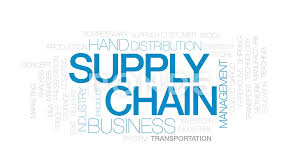Supporting S&OP with Stakeholder & Supply Chain KPIs
 KPIs are essential in S&OP as they provide a quantitative framework for gaining visibility, aligning efforts, supporting decision-making, and driving continuous improvement across the business. But how do you know if you are using the right KPIs, including both stakeholder and supply chain performance measures?
KPIs are essential in S&OP as they provide a quantitative framework for gaining visibility, aligning efforts, supporting decision-making, and driving continuous improvement across the business. But how do you know if you are using the right KPIs, including both stakeholder and supply chain performance measures?
It All Comes Down to Balance & Alignment
Unfortunately there is no easy answer to the question of whether or not you’re using the right KPIs for S&OP. Each organization is unique and requires different KPIs based on their specific needs. Ideally, your S&OP KPIs should consist of a mix of strategic, tactical, and operational metrics. Striking the right balance is essential, as an excess or deficiency in any one area can result in overlooking what truly matters.
At times, finding the right metrics can feel incredibly challenging, and there might be a tendency to measure things for the sake of measurement. Remember that you can update your KPI selection at any time, so remain open to replacing ineffective metrics.
The most important aspect to remember is that KPIs should align with your business strategy. They need to be meaningful and relevant to the business. Also, keep in mind that aligning your S&OP KPIs with business strategy is an iterative process. It requires ongoing evaluation, refinement, and adaptation to ensure that the chosen metrics remain relevant and effective in measuring progress towards strategic objectives.
What Should You Base Your KPIs On?
Stakeholder-Focused KPIs
By basing KPIs on stakeholders, you demonstrate a commitment to meeting their needs and expectations, which can lead to stronger relationships, increased trust, and improved overall performance. When working with stakeholder-focused KPIs and metrics, the following can help:
- Set targets and measurement criteria: Establish specific targets and measurement criteria for each KPI. The targets should be realistic and reflect the desired outcomes from the stakeholder perspective. For example, if one of your KPIs is customer satisfaction, you might set an on-time delivery goal or focus your attention on customer return rates.
- Monitor and report on stakeholder-focused KPIs: Regularly monitor the performance of stakeholder-focused KPIs and report the results to all relevant stakeholders. Use appropriate reporting mechanisms such as dashboards, scorecards, or periodic performance reports. Transparently communicate the progress and performance of your organization in meeting stakeholder expectations.
- Continuously engage with stakeholders: Maintain an ongoing dialogue with your stakeholders to keep them informed about your performance and solicit their feedback. Regularly review and update your stakeholder-focused KPIs based on changing stakeholder needs or emerging trends. Actively seek input from stakeholders to ensure that the KPIs remain relevant and meaningful.
Beyond stakeholder-focused KPIs, many companies focus on “flow of materials” to help evaluate the efficiency, effectiveness, and performance of the end-to-end supply chain operations. The KPIs here highlight procurement, production, logistics, and customer fulfillment.
Supply chain KPIs are crucial for optimizing processes, minimizing costs, improving customer service, and enhancing overall supply chain performance. By tracking these KPIs, companies can identify bottlenecks, streamline operations, strengthen relationships with suppliers and customers, and drive continuous improvement throughout the supply chain.
Here are some steps you can take to base KPIs on your supply chain operations:
- Map the material flow: Start by mapping out the flow of materials within your organization’s supply chain. Identify the key stages, processes, and touchpoints involved in the movement of materials from suppliers to customers. This includes procurement, production, transportation, warehousing, and distribution.
- Identify critical material flow metrics: Determine the critical metrics that measure the efficiency, reliability, and effectiveness of the supply chain. These metrics should align with your organization’s objectives and priorities. Some common KPIs for material flow include:
- Cycle time: Measure the time taken for materials to move through each stage of the supply chain.
- On-time delivery: Track the percentage of materials delivered on time to customers or internal stakeholders.
- Order fulfillment rate: Measure the percentage of customer orders or internal requisitions that are fulfilled accurately and promptly.
- Inventory turnover: Evaluate how quickly materials are moving through the supply chain by measuring the number of inventory turnovers within a given period.
- Fill rate: Assess the percentage of customer orders or internal requests that are fulfilled completely, without backorders or shortages.
- Lead time: Measure the time taken from when an order is placed until it is fulfilled and delivered to the customer.
- Transportation costs: Monitor and control the costs associated with transporting materials across the supply chain.
Download Silvon’s KPI Guide – Drive Better Business Performance
- Set targets and benchmarks: Set specific targets or benchmarks for each material flow KPI based on industry standards, historical data, or desired improvements. These targets should be realistic and aligned with your organization’s overall performance goals. Consider factors such as customer expectations, cost considerations, and operational constraints.
- Establish data collection and monitoring mechanisms: Implement systems and processes to collect the necessary data for tracking the KPIs. This may involve integrating data from various systems, such as enterprise resource planning (ERP), warehouse management, or transportation management systems. To integrate the data for reporting and analysis, consider the use of a data hub so everyone’s working with the same numbers. Also, establish regular reporting cycles and automated data capture to ensure timely and accurate KPI monitoring.
- Continuously measure and analyze performance: Monitor your supply chain KPIs regularly to assess performance and identify areas for improvement. Analyze the data to identify trends, bottlenecks, or inefficiencies in the material flow process. Use tools such as data visualization, root cause analysis, and process mapping to gain insights and make data-driven decisions.
- Implement process improvements: Based on the analysis of the KPIs, identify process improvements or optimization opportunities. This may involve streamlining procedures, eliminating waste, improving supplier collaboration, optimizing transportation routes, or enhancing inventory management practices. Implement these changes systematically to drive better material flow performance.
- Communicate and collaborate: Share your supply chain KPIs, targets, and progress with relevant stakeholders within your organization, including supply chain teams, operations, and senior management. Foster collaboration and cross-functional engagement to address challenges and align efforts towards optimizing the flow of materials.
- Continuously refine and adapt: Regularly review and refine your KPIs based on changing business needs, market dynamics, or industry trends. Stay updated with emerging technologies and best practices that can further improve the efficiency and effectiveness of your material flow processes.
A Balanced Approach Works Best
It’s important to note that the importance of stakeholder and supply chain KPIs to support the S&OP process can vary depending on the nature of the business and its strategic priorities. For example, a service-oriented company might prioritize customer satisfaction and employee engagement, while a manufacturing company might focus more on supply chain efficiency and inventory management. Ultimately, both stakeholder and supply chain KPIs are interconnected and contribute to the overall success of a company. You should strive for a balanced approach, considering the needs and expectations of both to achieve sustainable growth and long-term success.

